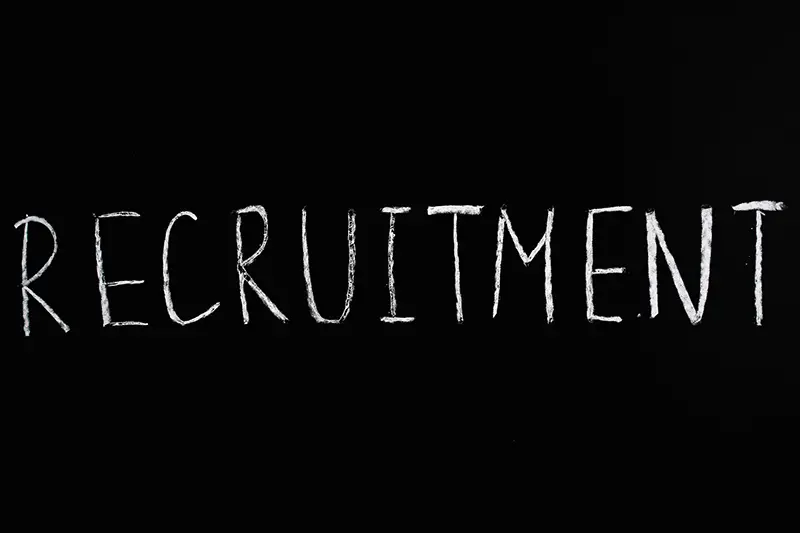Click here to get this post in PDF
When you are certain of your organization’s requirements, objectives, and incentives, you can more effectively recruit talent.
From ground staff and mechanics to pilots, individuals working in aviation must be an excellent match for their job. However, with the sector experiencing a critical skills shortage over the last several years, acquiring the necessary skills and expertise is becoming more challenging.
Boeing anticipates that worldwide demand for professional pilots would more than quadruple over the next two decades. In addition, over two-thirds of aviation executives see a maintenance technician labor shortage as their primary concern. By 2040, the industry will need 800,000 new pilots and a similar number of new technicians to manufacture over 40,000 aircraft globally.
How can airlines, maintenance repair organizations, equipment manufacturers, and industry suppliers recruit qualified labor to satisfy rising demand? The following are six strategies for attracting high-quality permanent and contract employees.
How to Recruit Aviation-Specific Personnel
Create a Brand of Choice for Employers
Employer branding strategies may make or break outcomes in terms of applicant attraction. Strong brand endorsement is critical for organizations to differentiate themselves from rivals and recruit top talent by projecting a picture of an ideal workplace.
Social media platforms are a great area to begin building an employer brand image. By advertising the company’s most relevant benefits through websites and digital platforms like LinkedIn, Facebook, and YouTube, you can directly appeal to your target audiences’ motivations and career ambitions. Also, Instagram is an excellent platform for showcasing your current workforce’s good work experiences, such as corporate social parties and events, anniversaries, promotions, and charity days, to give a first-hand account of employee life.
Collaborate with a Recruitment Specialist
Staffing firms like BOB Search that specialize in specific industries and subsectors bring years of highly relevant experience to the table. In addition, recruitment partners may offer an impartial assessment of a company’s needs and objectives and compare them to current market trends. They are also proficient in assisting business executives and human resource departments in attracting the right talent, expertise, and experience for planning future workforces.
Recognize and Communicate Requirements Effectively
By gaining a thorough understanding of your desired candidate base’s particular objectives, motives, and requirements, you have already won half the fight.
Establish a clear image of the expertise you need. Which platforms have they previously used? Do they require ‘softer’ talents such as collaboration, communication, and motivation to manage a diverse team? Utilize this information to influence candidate selection beginning with the first step. Regulatory requirements, personality traits, and qualities that complement the business’s brand and customer/stakeholder demands will determine the appropriate criteria and allow hiring managers to more effectively assess candidates.
Alignment within senior management, department heads, and recruiting managers results in job advertising that clearly communicates position criteria, work emphasis, and business culture. Positive candidate interactions save time, resources, and money while ensuring a consistent interview session that attracts and retains top talent.
Consider Technological Support
Today’s recruitment software significantly improves the simplicity and efficiency of the hiring process. For example, an Applicant Tracking System, or ATS, may automate some aspects of the recruiting process, assisting your recruiting agency and human resources departments in saving time and increasing productivity. In addition, job advertising, reporting, analysis, and cloud backup are streamlined to provide quicker and more accurate results.
Industry Collaborations
Concentrate on developing relationships with universities and colleges to educate the next generations of prospective candidates about fascinating and little-known professions.
Young people are eager to see the world and absorb as much information as possible. Therefore, employers that offer vacations, opportunities to work abroad, employee benefits, and flexible working arrangements are sure to inspire this generation, making aviation and aerospace an ideal career fit for Gen Z.
Reaching prospective talent pools early in their professional development will offer critical guidance on industry views among young individuals of all ages and backgrounds. Volunteer to organize a lecture or conversation to engage students directly and educate them on the nature of industry openings and, more crucially, the skill sets in demand. Grab students interested in a career as a pilot, technician, or engineer and develop them throughout their schooling and into the industry.
Apprenticeships
Pilot apprenticeships, a comparatively new and unconventional path, are gaining popularity. Aerospace and aviation apprenticeships are proven to be very popular among motivated, bright, and passionate young individuals seeking an exciting career path without incurring university debt.
Internships can provide younger students with unique insights into aviation professions. Employers, in turn, will benefit from the chance to acquire practical expertise and a better understanding of future available possibilities by engaging, building, and developing a pool of eager applicants as early as feasible.
Effective Advertising
Unlike the conventional method of working under the supervision of a recruiting manager, some aerospace industry prodigies operate autonomously.
As a result, you must contact them. Good networking is critical if you want to get their interest. In order to reach as many untapped talent as possible, you must use a diverse advertising strategy.
There are many methods of advertising online. Promote your firm/company through social media platforms such as LinkedIn, Twitter, Facebook, Instagram, and YouTube. You may also promote on high-traffic websites and via physical media such as newspapers and billboards.
Conclusion
Aviation advancements and productivity demands place a premium on high-caliber people with relevant and honed practical skills. As a result, business executives, hiring managers, and recruiting partners will need to step up their game to compete for and acquire talent.
You should cultivate an atmosphere inside your distinctive, engaging, encouraging, and creative company. Make sure to evaluate the considerations stated above in order to attract the finest aeronautical talent.
You may also like: 6 Recruitment Tips For Finding The Top Candidates

